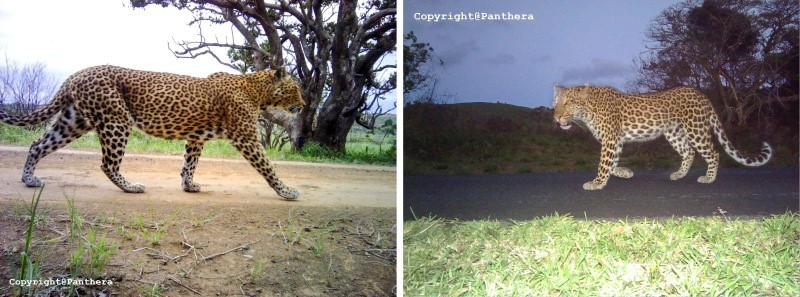Leopards tracked on camera
Camera traps important for data collection in iSimangaliso Wetland Park

SOCIAL and natural science research within the iSimangaliso Wetland Park forms a vital component of the Park’s reservoir of data, trends and information.
This assists management functions within the World Heritage Site.
At the end of 2016 there were 130 registered projects dealing with subjects across marine, terrestrial and social spheres.
One of these is the annual Panthera Leopard Survey run by Dr Guy Balme in collaboration with the iSimangaliso Wetland Park, Ezemvelo KZN Wildlife and Wildlife ACT.
Commencing in 2015, the fourth annual survey is well underway on the Eastern Shores section of iSimangaliso Wetland Park.
The survey incorporates the use of camera traps located at strategic points and well-used ‘animal highways’ in the Park.
Thousands of images are collected through the automatic triggering of the high quality, custom-built cameras which are placed on either side a road or track to obtain visuals of animals from both sides.
Such material is extremely useful in revealing the unique patterns and characteristics of each animal, enabling researchers to accurately identify the individual animals and draw conclusions about behaviour and range.

Important knowledge gained
According to iSimangaliso’s Manager Development and Planning, Nerosha Govender: ‘Although resilient in the face of human pressure, leopards have suffered a significant reduction in abundance and range.
‘For such a ubiquitous species, remarkably little information exists on the demography and status of leopard populations.
‘Such baseline data is critical to inform management activities and to evaluate the success of management decisions.’
This is part of the South African Leopard monitoring program, a joint venture between Panthera, SANBI and provincial conservation authorities, which tracks the status of key leopard populations around the country in order to identify threats as well as to understand the drivers of leopard population change.
Policy changes
The results from Panthera’s Leopard Project has already informed a number of policy changes that have benefited the regional leopard population ensuring that viable populations of leopards are protected.
The South African Leopard Monitoring Project continues to fulfil its mandate to provide robust data on leopard population density and trends, which will inform conservation policy and management.
The Panthera camera traps continue to capture valuable leopard population density and demographic data.
The additional priority species data captured by the camera traps aid in reserve management decisions, and are a notable bonus when analysing data.
Wildlife ACT Leopard Survey Monitor, Thandiwe Knutson is responsible for the Eastern Shores data collection.
Every three weeks she heads out into the field to download the images, check the cameras and process the resultant data.
HAVE YOUR SAY
Like our Facebook page and follow us on Twitter.
For news straight to your phone invite us:
WhatsApp – 072 069 4169
Instagram – zululand_observer

